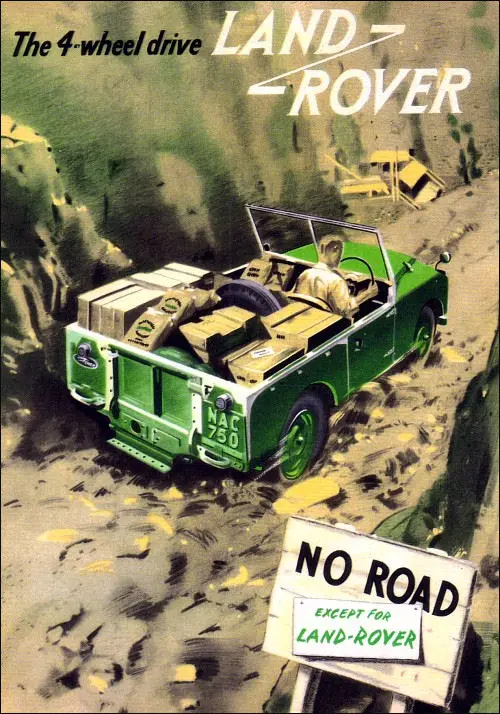MOTORING IN 1952 – THE LAND-ROVER 80
08 June 2022
By 1952 the Land-Rover 80 was a familiar aspect of everyday life in many parts of the UK. Since its debut at the Amsterdam Motor Show in April 1948, the first-generation 80 had gained a 2-litre engine, a new grille, and selectable two or four-wheel drive replacing the freewheel system. AWD automatically engaged when the driver selected the low gear range. Visitors to the London Commercial Vehicle Show could also marvel at the offside wing mirror, and the external door handles in place of the canvas flaps below the side screens of the earlier versions. Optional extras included trafficators and a heater-demister unit, although some die-hard owners cited the latter as proof of Britain’s post-war decadence.

Three years earlier, the British Army evaluated its first batch of LRs, and by 1952 the War Office had purchased 2,331 1.6-litre versions and 2,100 2-litre models. Such was the orders size that Solihull’s management eventually decided to paint all models in military ‘Deep Bronze Green’. 1949 also saw the Automobile Association begin using the 80 for their London ‘Night Patrols’.
In 1950 the RAF placed an order for a small number of LRs, with the Royal Navy commissioning shore-based liaison vehicles in 1951. The following year, there was news of a Land-Rover fire appliance fitted with a Pegson centrifugal self-priming pump, 120 ft. of hose and a 40-gallon water tank mounted between the wheel arches.
Another significant development for 1952 was the Belgian government placing an order for 5,000 LRs - the initial consignment exported from the West Midlands and the bulk made at the Minerva works in Antwerp. Back in the UK, one problem faced by many 80 owners was the 30-mph speed limit for ‘Commercial Vehicles, with the prospect of being ‘gonged’ by a police Wolseley for travelling at a wild 40 mph. An owner charged with exceeding this regulation appealed to the House of Lords, which led to the LR’s reclassification as a ‘Multi-Purpose Vehicle’.
And seventy years ago, the idea of employing a Land-Rover for leisure pursuits would have been as unthinkable as the prospect of wireless stations devoted entirely to ‘popular music’. Outside of the Armed Forces, the AA, and fire brigades, the 80 was primarily associated with the agricultural communities. Commercial Motor of 27th June 1952 included an article celebrating how a Somerset farmer used his three-year-old LR 365 days of the year, where it performed every task on the 180 acres except for ploughing and sowing. The report also noted it was ‘amenable to firm handling by any considerate human, and consumes the minimum of fuel’, which echoed the company’s 1952 slogan - “Wherever there is work to be done – you’ll find the Land-Rover”.
